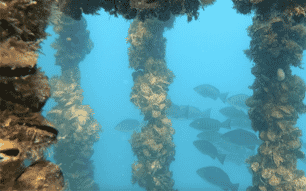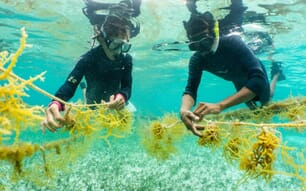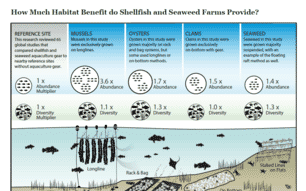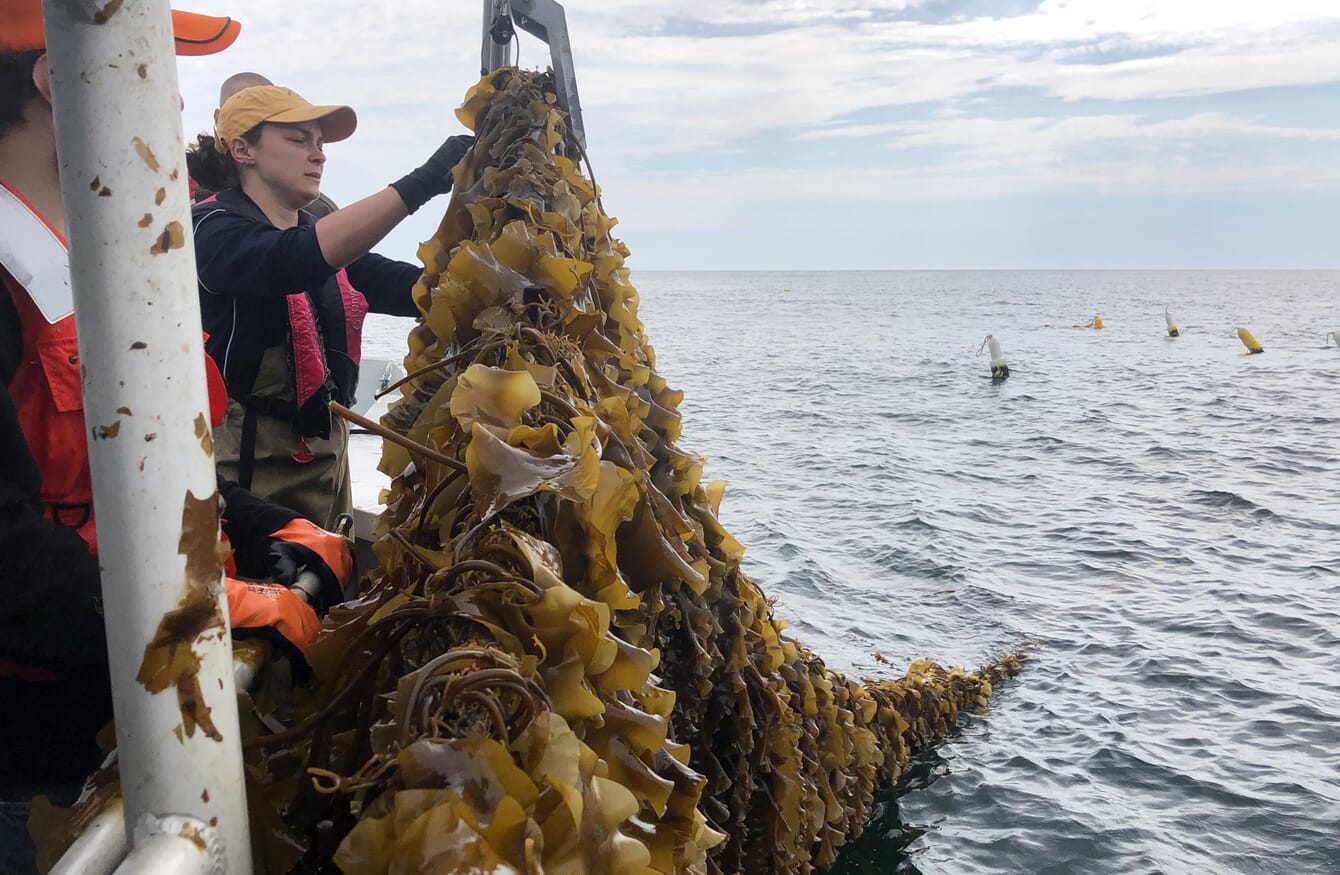
The study suggests that promoting the environmental benefit of seaweed and sustainable farming practices would encourage consumers to pay more for seaweed products © Dr Carrie J Byron
To complete the study, a survey was given to 41 consumers across the USA, asking them what price they were willing to pay for a range of seaweed products or products containing seaweed ingredients, including a kelp toothpaste, seasoning shampoo, a dietary supplement and vodka. Then, consumers were shown a 90-second video that introduced the term 'ecosystem services' and showed examples of ecosystem services associated with seaweed farming. After this video-based education, consumers were once again asked the price they were willing to pay for the same products. Regardless of the product or the demographics of the survey respondents, they indicated they were willing to pay more for the same products after the educational video.
“These results suggest that the seaweed aquaculture industry has potential to increase the price points of their products, and possibly consumer demand, by promoting the environmental benefit of their products and sustainable farming practices,” says TNC fellow and ocean food systems student Will Bolduc, who completed the study.
The study provides an important insight into the opportunity – and need – to influence the emerging trend of nature-positive food. While seaweed is commonly consumed in some regions and cultures, in most diets across the world seaweed and seaweed-based products are not yet prominent. This means that reducing the impact of food production by shifting food sources from land to the sea could be difficult, especially if these shifts are to generate meaningful reductions on greenhouse emissions and land use soon. If we want to transition food systems toward sources of food that can have a lower environmental impact, we need to understand what consumers value in this transition and, ultimately, what they are willing to pay for.
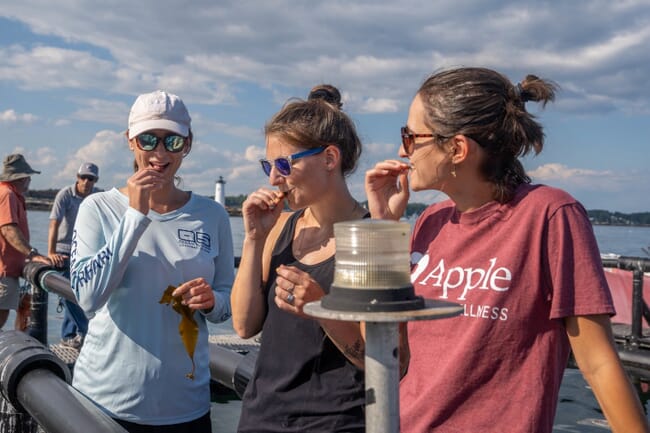
Activities such as these promote creative ways to integrate seaweed into American diets, where seaweed is not commonplace on the dinner table. Changing your diet to eat lower on the food chain, which has lower carbon emissions, is a climate adaptation strategy that we can all get do. © Hannah Packman
Importantly, the current low consumption rates of seaweed worldwide contrast with the large number of species it might be possible to cultivate in aquaculture. Five species varieties make up 95 percent of global seaweed production, yet more than 12,000 species of seaweed have been described worldwide and many of these come with a high nutritional value, including being a good source of protein. In many geographies, hundreds of potentially viable seaweed species occur naturally – the bottleneck for sustainable development commonly being a lack of market demand, leaving farmers with the challenge of trialling and scaling production at the same time as securing and growing new markets.
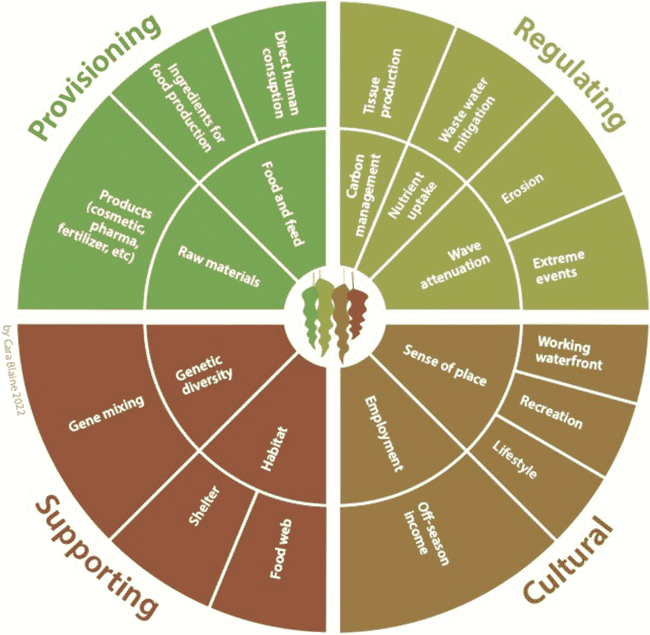
© Cara Blaine, adapted from (Alleway et al. 2019), published in (Bolduc et al. 2023).
Understanding what consumers value in ecosystem services
One of the more interesting and perhaps unanticipated learnings from the consumer survey was how the respondents valued each type of ecosystem service (figure 1). During the consumer survey, respondents were asked to rank the four types of ecosystem services from most to least important.
- Provisional ecosystem services describe the products that are derived from the seaweed farm.
- Regulating ecosystem services describe seaweed nutrient cycling or participating in the carbon cycle, all of which happen by virtue of seaweed being alive and providing an important regulatory function in the environment.
- Cultural ecosystem services describe human sense of place and connection with seaweed farming.
- Supporting ecosystem services include habitat provisioning and biodiversity at the farm site.
It seemed obvious that respondents would value the provisional services provided by seaweed farms, or the regulating services, given their links to climate change. But surprisingly, respondents ranked supporting and habitat services as most important. Knowing that consumers value supporting services and they're important for biodiversity provides motivation to continue research in this area.
Furthermore, of the four types of ecosystem services, supporting services are the most contextual depending on the season and location of the farm. In parallel with this study, additional work is being done to quantify supporting ecosystem services of seaweed farms in Maine and using sites in New Zealand to understand how differences based on geography might also influence how ecosystem services are provided.

